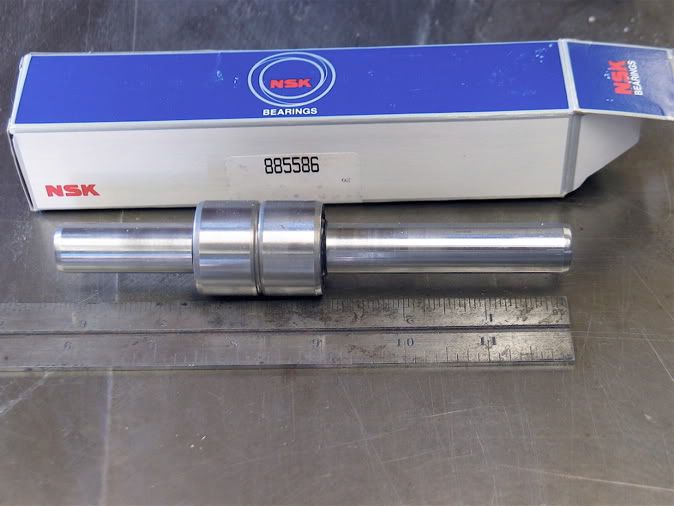Hi all,
I have an elderly Vega 24 bowl lathe that I am trying to revive and I have a question about how I can change the spindle size from it's current oddball keyed size of 3/4" to what my faceplate and chuck uses with is 1" x 8 tpi. I could not find a 3/4" adapter but already had a Shopsmith style 5/8" to 1" x8tpi. I thought I'd be clever and drill the 5/8" out to fity the 3/4" spindle that you see in the photo below. I don't think it worked out that well because I definitely have 'runout' when I use that adapter. I think it is called 'runout'. I am afraid that I did not drill the hole absolutely centered because I get alot of chatter and if I lay a straight edge on top of the spindle adapter I can hear and see a very small, but obvious bounce. If I could find a 3/4" to 1" adapter I could probably use that but my ideal situation would be to either get a new bearing and spindle that would be the correct 1" size so that I do not have to hang an adapter out there. I would be more than willing to replace the entire assembly from the pulley on down to the threads. Would it be possible to having a threaded piece of metal permanently welded on my current assembly?
Thanks very much,
Jim Lee
I have an elderly Vega 24 bowl lathe that I am trying to revive and I have a question about how I can change the spindle size from it's current oddball keyed size of 3/4" to what my faceplate and chuck uses with is 1" x 8 tpi. I could not find a 3/4" adapter but already had a Shopsmith style 5/8" to 1" x8tpi. I thought I'd be clever and drill the 5/8" out to fity the 3/4" spindle that you see in the photo below. I don't think it worked out that well because I definitely have 'runout' when I use that adapter. I think it is called 'runout'. I am afraid that I did not drill the hole absolutely centered because I get alot of chatter and if I lay a straight edge on top of the spindle adapter I can hear and see a very small, but obvious bounce. If I could find a 3/4" to 1" adapter I could probably use that but my ideal situation would be to either get a new bearing and spindle that would be the correct 1" size so that I do not have to hang an adapter out there. I would be more than willing to replace the entire assembly from the pulley on down to the threads. Would it be possible to having a threaded piece of metal permanently welded on my current assembly?
Thanks very much,
Jim Lee


